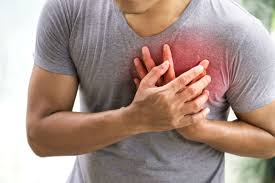
Chest pain is a common symptom that can arise from various causes, ranging from minor muscle strains to life-threatening conditions like a heart attack. Distinguishing between the two is crucial for prompt and appropriate medical care. While chest pain can be alarming, it’s essential to understand the differences between symptoms of a heart attack and those of a muscle strain. In this article, we’ll explore the signs and symptoms of both conditions, as well as the appropriate steps for chest pain care, including services offered by Healthpoint Abu Dhabi.
Signs of a Heart Attack:
A heart attack occurs when blood flow to the heart is significantly reduced or blocked, leading to damage or death of heart muscle tissue. Symptoms of a heart attack may include:
- Severe or crushing chest pain or pressure that may radiate to the neck, jaw, shoulders, or arms
- Shortness of breath
- Nausea or vomiting
- Sweating
- Dizziness or lightheadedness
- Irregular heartbeat
Signs of a Muscle Strain:
Muscle strains in the chest, also known as costochondritis, often result from overuse or injury to the muscles and ligaments between the ribs. Symptoms of a muscle strain may include:
Sharp or stabbing pain localized to the chest area
Pain that worsens with movement, deep breathing, or coughing
Tenderness or swelling around the affected area
Pain that improves with rest and over-the-counter pain relievers
Seeking Medical Attention:
When experiencing chest pain, it’s essential to err on the side of caution and seek prompt medical attention, especially if you suspect a heart attack. Call emergency services or go to the nearest emergency department immediately if you experience:
Chest pain that lasts more than a few minutes
Chest pain accompanied by shortness of breath, nausea, sweating, or lightheadedness
Chest pain that spreads to the arms, neck, jaw, or back
Chest Pain Evaluation and Treatment:
Upon arrival at the emergency department, healthcare professionals will conduct a thorough evaluation, including a physical examination, electrocardiogram (ECG), blood tests, and possibly imaging studies such as a chest X-ray or cardiac imaging. Treatment for a heart attack may include medications to relieve pain, oxygen therapy, aspirin, nitroglycerin, and interventions such as angioplasty or stent placement. Treatment for a muscle strain typically involves rest, ice or heat therapy, over-the-counter pain medications, and physical therapy.
Chest pain can be a frightening and concerning symptom, but it’s essential to remain calm and seek appropriate medical care. Understanding the differences between symptoms of a heart attack and those of a muscle strain can help you make informed decisions about your health. If you experience chest pain, don’t hesitate to seek immediate medical attention. Healthpoint Abu Dhabi offers comprehensive emergency care services, including evaluation and treatment of chest pain, to ensure timely and effective care for individuals in need.
